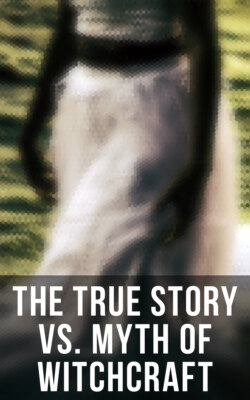Читать книгу The True Story vs. Myth of Witchcraft - William Godwin - Страница 175
На сайте Литреса книга снята с продажи.
Trithemius.
ОглавлениеA name that has in some way become famous in the annals of magic, is that of John Trithemius, abbot of Spanheim, or Sponheim, in the circle of the Upper Rhine. He was born in the year 1462. He early distinguished himself by his devotion to literature; insomuch that, according to the common chronology, he was chosen in the year 1482, being about twenty years of age, abbot of the Benedictine monastery of St. Martin at Spanheim. He has written a great number of works, and has left some memorials of his life. Learning was at a low ebb when he was chosen to this dignity. The library of the convent consisted of little more than forty volumes. But, shortly after, under his superintendence it amounted to many hundreds. He insisted upon his monks diligently employing themselves in the multiplication of manuscripts. The monks, who had hitherto spent their days in luxurious idleness, were greatly dissatisfied with this revolution, and led their abbot a very uneasy life. He was in consequence removed to preside over the abbey of St. Jacques in Wurtzburg in 1506, where he died in tranquillity and peace in 1516.
Trithemius has been accused of necromancy and a commerce with demons. The principal ground of this accusation lies in a story that has been told of his intercourse with the emperor Maximilian. Maximilian’s first wife was Mary of Burgundy, whom he lost in the prime of her life. The emperor was inconsolable upon the occasion; and Trithemius, who was called in as singularly qualified to comfort him, having tried all other expedients in vain, at length told Maximilian that he would undertake to place his late consort before him precisely in the state in which she had lived. After suitable preparations, Mary of Burgundy accordingly appeared. The emperor was struck with astonishment. He found the figure before him in all respects like the consort he had lost. At length he exclaimed, “There is one mark by which I shall infallibly know whether this is the same person. Mary, my wife, had a wart in the nape of her neck, to the existence of which no one was privy but myself.” He examined, and found the wart there, in all respects as it had been during her life. The story goes on to say, that Maximilian was so disgusted and shocked with what he saw, that he banished Trithemius his presence for ever.
This tale has been discredited, partly on the score of the period of the death of Mary of Burgundy, which happened in 1481, when Trithemius was only nineteen years of age. He himself expressly disclaims all imputation of sorcery. One ground of the charge has been placed upon the existence of a work of his, entitled Steganographia, or the art, by means of a secret writing, of communicating our thoughts to a person absent. He says however, that in this work he had merely used the language of magic, without in any degree having had recourse to their modes of proceeding. Trithemius appears to have been the first writer who has made mention of the extraordinary feats of John Faust of Wittenburg, and that in a way that shews he considered these enchantments as the work of a supernatural power. 198
